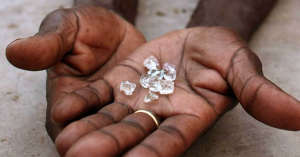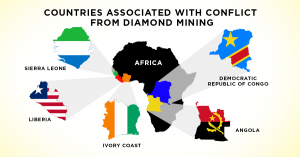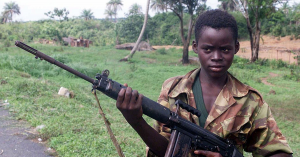Conflict-Free Diamonds – Why it’s important
When shopping for jewelry, it’s not hard to see why diamonds are so sought after. They’re beautiful, durable, and classic. But sadly there is a massive market for exploitation of these jewels, and since they are so valuable, the consequences are high-stakes. Diamonds are often sold to finance terrorism and violence in war-torn areas, specifically regions in Africa. They are often called “blood diamonds,” and it’s essential that you check with your jeweler before purchasing to make sure they are committed to keeping them out of the marketplace. Buying conflict-free diamonds is imperative.
History of Conflict-Free Diamonds
People have been mining diamonds out of deposits throughout Africa since the 19th century, but the region gained international attention for exploitation of the jewel in the 1990s during the civil war in Sierra Leone. The area was rich in alluvial diamond deposits, so rebels used the sale of diamonds to pay for weaponry, which they used to terrorize neighborhoods throughout the region. Over a decade of assaults led to about 70,000 casualties and the displacement of 2.6 million people, including children, according to the United Nations Development Programme.
Conflict-Free Diamond Regions
Though the Sierra Leone civil war ended in 2002, the diamond industry is still fraught with corruption and conflict. And since diamond deposits are often found in war-torn regions, Sierra Leone is unfortunately not the only country to be affected by the violence incited by such conflict. Blood diamonds often originate in other African towns such as Angola, Democratic Republic of Congo, Liberia, and Ivory Coast. They have also helped to finance the violent activities of Liberian warlord Charles Taylor and the terrorist group al-Qaeda.
In 1999, about 4% of the world’s diamond production involved conflict diamonds. Tired of the violence infecting their continent, Southern African diamond-producing states met in Kimberley, South Africa in May 2000 to discuss how to keep diamonds out of the hands of terrorist rebel groups. Here, the Kimberley Process Certification Scheme (KPCS), which now represents 81 countries through 54 participants, was born.
The Kimberley Process
The Kimberley Process imposes strict guidelines for diamond production and sale. Therefore, allowing distributors to certify their diamonds are conflict-free. Certified diamonds keep blood diamonds out of the legitimate marketplace. Since KPCS went into effect in 2003, approximately 99.8% of global diamond production is conflict free.
Though KPCS has reduced the conflict diamond market share by 3.8%, there is still violence occurring internationally on behalf of blood diamond-funded groups. Bain & Company reports that 133 million carats of diamonds are mined every year, 65% of which come from Africa. Even if only .02% of diamonds were not produced in adherence to the KPCS, that’s still at least 26,000 diamonds. Each of those diamonds is contributing money to war and terror every year.
Luckily, it’s pretty easy to make sure that the diamond you buy is conflict-free. Most retailers make a serious commitment to only selling conflict-free diamonds. You can usually find that pledge somewhere on their website. While many consumers want vintage diamonds, buying new diamonds ensures they aren’t buying a blood diamond. That is because there is no surefire way to trace an antique diamonds production history
To learn more about TwoBirch’s commitment to conflict-free diamonds, click here.




There are no comments
Add yours